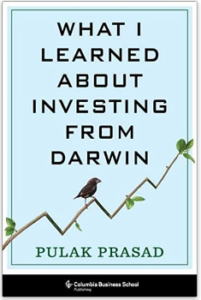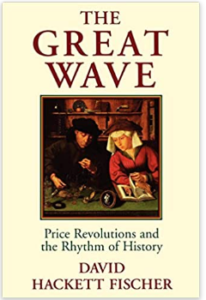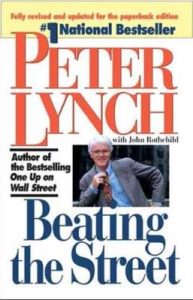By Mike Dash, 2010 (288p.)
While I had read about Tulipmania in other books, such as Charles Mackay’s Memoirs of Extraordinary Popular Delusions and the Madness of Crowds (1841) and Edward Chancellor’s Devil Take the Hindmost (1999), this was my first book dedicated to the topic. I read it with the purpose of drawing parallels with Cryptomania, and I was not disappointed with what it had to offer on this front. It tells the story of how a mysterious man called Carolus Clusius became known as “the greatest botanist of the sixteenth century, indeed one of the greatest of all time, the father of the tulip.” Like the myth of Satoshi Nakamoto, known as the “father of Bitcoin” for publishing a 9-page whitepaper in 2008 containing flowcharts and complex scientific equations (link), the myth of Clusius the Botanist added respectability to the practice of collecting tulips in the early 1600s. Notably, Clusius was not the botanist’s real name.
The flower lovers of Clusius’s day had only a handful of tulip species to pursue, while the noblemen who collected them relied on specialists like Clusius to help them understand what they owned. The book mentions several tulip species that gained prominence and traded at absurd prices at the peak of the bubble, but Dash focuses on Semper augustus. Anyone who had seen one professed that it was a living wonder, yet, according to Dash, “very few people ever had this privilege”. Dash makes the point that the Semper augustus was practically never actually traded, and was so rare that there were simply no bulbs to be had. But Clusius, who was only known by a few prominent connoisseurs, was said to hold a huge collection of Semper augusti that he would never sell. Sound familiar?
Mike Dash is a British writer and his book was not only extremely informative, but a joy to read. I second the NY Times comment that he “writes with unabashedly cinematic flair, backed by meticulous research.” I don’t think Dash considers himself a scholar, but his historic research and bibliographic citations are impressive, as is his background. He attended King’s College, which is where John Maynard Keynes got his higher Mathematics degree. But Dash went to King’s to complete an obscure PhD thesis focused on British submarine policy between the Crimean and the First World Wars. He has published four other history books, including Batavia’s Graveyard (2002), which tells the story of a mutiny on one of the Dutch East India Company’s ships in 1628, and The First Family (2009), which recounts the birth of the American Mafia. What I appreciated the most from Dash’s narrative is that it is unbiased and well-balanced. Towards the end of the book, for instance, Dash makes the case that “even after sounding the necessary notes of caution about the reliability of the popular accounts, historians and particularly economists remain guilty of exaggerating the real importance and extent of the tulip mania.” This comment inspired me to re-read Mackay’s chapter on the mania, and indeed, it seems a tad exaggerated.

Mike Dash
By the time Tulipmania climaxed in 1636, there were close to six thousand different tulips cataloged, and hundreds of Tulip brokers, who were called Florists. As with cryptos, there were many different options for speculating. But that’s not where the parallels end. The Black Plague had created a shortage of labor, which in turn resulted in a rise in wages as employers competed for manpower. But instead of rising to the challenge by getting a real job, many younger Dutch laborers wanted more. “The notion of creating a little tulip nursery came naturally to many people who began to call themselves florists. It was lot easier than working an eighty-hour week hammering horseshoes or working a loom,” Dash explains, “and because demand for the flowers was steadily increasing, prices, at least for the finer varieties, consistently rose. No wonder Dutchmen thought they had chanced upon the dream of every gambler: a safe bet. … It was with this backdrop that people of all walks of life suspended disbelief. Ignoring the customs of the connoisseurs, increasing numbers of florists progressed from trading only tulips that they had in their possession to buying and selling flowers that were still in the ground. Bulbs then ceased to be the unit of exchange; now the only thing that changed hands was a promissory note— a scrap of paper giving details of the flower being sold and noting the date on which the bulb would be lifted and available for collection.” I am not saying (although the parallel is hard to ignore) that cryptos are like tulips. But I am suggesting that the stories of bubbles often rhyme, and that the bitcoin story sounds a lot like the tulip story.
I had never quite understood why tulips became an article of wild speculation, but this book helped me see it. Again, as with Bitcoin, there is a story of limited supply. As Dash explains: “Most tulip bulbs will produce only two or three offsets a year and can do so for only a couple of years before the mother bulb becomes exhausted and dies. For this reason new varieties of tulips multiply only very slowly at first. Once a grower has identified, in a single flower of some new variety, great beauty or strength that he may be able to sell, he will have— even if all goes well— quite possibly only two bulbs the next year, four the year after that, eight in the next year, and sixteen in the fourth year of cultivation. If he parts with some of these bulbs, moreover, he limits his own ability to produce large quantities of the new variety. Plainly, then, it can take a decade for a new tulip to become available in any sort of numbers— and in Golden Age Holland, where propagation was a poorly understood mystery at best, the number of bulbs that were actually produced would have fallen well short of the theoretical maximum. Any rare and coveted variety would thus inevitably remain in short supply for a number of years, and there was nothing that even the most brilliant bulb growers could do to increase production to meet demand.” Buy!
While it’s possible to find parallels among most (if not all) speculative manias in history, it’s the differences that interest me the most. Most people conflate the bursting of speculative bubbles with economic ruin, but as I learned from this book, Tulipmania stands out as an exception on this front. There are, of course, the tales about people who lost everything in the frenzy, but what most people perhaps don’t realize is that Tulipmania was a contained event that took no more than two months to play out, and it did very little damage except to those who were directly involved. Dash writes that “by 1636, there were at least 360 different commodities traded on the Amsterdam exchange. Tulips, however, were not among them.” Mackay wrote in his 1841 book that “regular marts for their [tulips] sale were established on the Stock Exchange of Amsterdam, in Rotterdam, Harlaem, Leyden, Alkmar, Hoorn, and other towns,” but I prefer to go with Dash, who claims that “speculation in tulip bulbs always existed at the margins of Dutch economic life, but it was conducted by amateurs, not professional traders, and was never subject either to the customs (however peculiar) or to the regulation of the stock exchange.” As so often happens, many of the folk who got burned by tulips were largely “country people and poor city dwellers who had, when they started dealing in bulbs, almost certainly never owned a single share in their whole lives.”
In closing, this was an excellent history book that I would recommend to anyone interested in manias and the human proclivity to engage in dangerous speculations based on popular delusions wrapped in a seductive veil of complexity.
Cheers,
Adriano
HIGHLIGHTED EXCERPTS
A Note on Prices
1,600 guilders: Rembrandt’s fee for his greatest masterpiece, The Night Watch, 1642
5,200 guilders: highest reliably attested price paid for a tulip bulb, 1637
…a Disease that ruined several rich Families. (LONDON, 1743)
Chapter 1 – A Mania for Tulips
The date was February 5, 1637, the day flower fever reached such a pitch of frenzy in the United Provinces that once- worthless bulbs truly theatened to supplant precious metals as objects of desire. That day the tulip completed a journey that had begun hundreds of years before and thousands of miles away.
Chapter 2 – The Valleys of Tien Shan
Hundreds of years after this story was first written down, wild red tulips remained a favorite Persian token of undying love. “When a young man presents one to his mistress,” the seventeenth- century traveler John Chardin recounted, “he gives her to understand, by the general colour of the flower, that he is on fire with her beauty; and by the black base of it, that his heart is burnt to a coal.”
Chapter 3 – Within the Abode of Bliss
Bayezid is the first man in history who can be personally identified with the tulip.
Admittedly Constantinople was something of a shadow city by 1400, its decline reflecting the fading fortunes of its Byzantine rulers. In fact it was more than half empty, the seven long miles of its walls enclosing a town of no more than fifty thousand people, scattered now among what were effectively large villages separated by ruins, working farms, and orchards. But in size and situation and repute, it was still the greatest city in the world. It was fit to be the capital of the Ottoman Empire— and the new home of the tulip too.
In 1453, after a desperate siege lasting less than two months, Mehmed’s troops forced a breach in the walls, and the Turks poured into Constantinople. The last Byzantine emperor threw away his imperial insignia and sought an anonymous death in the press of the fighting. Then amid terrible scenes of massacre, the Ottomans took Constantinople and made it Istanbul.
Europeans who traveled to Istanbul during the high days of the Ottoman Empire that Mehmed and his successors now built were generally surprised not merely by the city’s size and opulence but by its masters’ manners and good taste. This was a city of culture and coffeehouses that tolerated the religious diversity of its inhabitants in a manner inconceivable in Europe.
Chapter 4 – Stranger from the East
Fortunately such a man existed. He was indisputably the greatest botanist of the sixteenth century, indeed one of the greatest of all time. He was to become, in important respects, the father of the tulip. His name was Carolus Clusius.
Chapter 5 – Clusius
Clusius was not his real name. By now the botanist was at the height of his powers. A contemporary portrait shows a long-faced gentleman of obvious intelligence with a steady, piercing gaze.
Chapter 6 – Leiden
Most tulip bulbs will produce only two or three offsets a year and can do so for only a couple of years before the mother bulb becomes exhausted and dies. For this reason new varieties of tulips multiply only very slowly at first. Once a grower has identified, in a single flower of some new variety, great beauty or strength that he may be able to sell, he will have— even if all goes well— quite possibly only two bulbs the next year, four the year after that, eight in the next year, and sixteen in the fourth year of cultivation. If he parts with some of these bulbs, moreover, he limits his own ability to produce large quantities of the new variety. Plainly, then, it can take a decade for a new tulip to become available in any sort of numbers— and in Golden Age Holland, where propagation was a poorly understood mystery at best, the number of bulbs that were actually produced would have fallen well short of the theoretical maximum. Any rare and coveted variety would thus inevitably remain in short supply for a number of years, and there was nothing that even the most brilliant bulb growers could do to increase production to meet demand.
Chapter 7 – An Adornment to the Cleavage
It was a time of tremendous cultural progress. The arts flourished as never before, fueled not only by the establishment of Leiden and other universities and schools but also by the arrival of many painters and writers from the south.
Chapter 8 – The Tulip in the Mirror
Those fortunate enough to actually see a specimen of Semper Augustus in flower thought it a living wonder, as seductive as Aphrodite. In truth, though, very few people ever had this privilege. Although the tulip was endlessly hymned by the connoisseurs, illustrated in more tulip books than any other variety, and mentioned so frequently in connection with the bulb craze that it has become virtually synonymous with it, Semper Augustus was practically never actually traded. It was so rare that there were simply no bulbs to be had. The earliest mentions of the flower date only to the 1620s. By 1624— according to the Dutch chronicler Nicolaes van Wassenaer, who is virtually the only reliable source on the subject— no more than a dozen examples were then in existence, and all twelve were in the hands of a single man who was generally rumored to live in Amsterdam. The identity of this unknown connoisseur is one of the great mysteries of the tulip craze. Van Wassenaer is careful not to name him, and in the absence of any other evidence, it seems unlikely that the puzzle will ever be solved. This, perhaps, is what the reclusive connoisseur would have wished, because the chronicler makes it clear that he was determined not to part with his flowers at any price.
…who had none of the skills needed to breed varieties of their own and few of the connections necessary to obtain bulbs in the traditional way, had begun to enter the market. Some possessed extensive gardens and wished to cultivate tulips of many different varieties. These newcomers were forced to look elsewhere for their supplies.
Clusius and his circle of aristocratic friends possessed a low opinion of these first professionals, criticizing them for their often alarming ignorance of botany and despising their willingness to bestow crudely populist names on the new varieties that occasionally appeared— more, perhaps, by luck than judgment— in their gardens.
Chapter 9 – Florists
The notion of creating a little tulip nursery would have come quite naturally to many of the florists.
Here two of the most striking characteristics of Dutch society came into play: the urge to save and the urge to gamble. These impulses may seem quite contradictory, but in fact they worked together to fuel the tulip mania.
Compared to such insane wagers, tulips looked like a good investment. Growing bulbs was a lot easier than working an eighty- hour week hammering horseshoes or working a loom, and because demand for the flowers was steadily increasing, prices, at least for the finer varieties, consistently rose. No wonder Dutchmen thought they had chanced upon the dream of every gambler: a safe bet.
Chapter 10 – Boom
The tulip mania climaxed in just two mad months: December 1636 and January 1637.
The appalling impact of the plague had two significant consequences. One was that it created a shortage of labor and thus resulted in a rise in wages as employers competed for manpower;
From the autumn of 1635, then, the bulb trade changed fundamentally and forever. Ignoring the customs of the connoisseurs, increasing numbers of florists progressed from trading only tulips that they had in their possession to buying and selling flowers that were still in the ground. Bulbs then ceased to be the unit of exchange; now the only thing that changed hands was a promissory note— a scrap of paper giving details of the flower being sold and noting the date on which the bulb would be lifted and available for collection.
Chapter 11 – At the Sign of The Golden Grape
Vega (Wikipedia) does not mention what his small-time broker was hoping to buy or sell for his handful of guilders, but he had a considerable choice: By 1636 at least 360 different commodities were traded on the Amsterdam exchange. Tulips, however, were not among them. This fact may come as a surprise to those who assume that a financial calamity with the reputation that the tulip mania enjoys must necessarily have been serious and widespread and have had a significant impact on the stock market, on trade, and on the Dutch economy in general. Nothing could be further from the truth. The speculation in tulip bulbs always existed at the margins of Dutch economic life. It was conducted by amateurs, not professional traders, and was never subject either to the customs (however peculiar) or to the regulation of the stock exchange. The mania took, in fact, the form of a rough but intended parody of the trade in commodities and shares that flourished on the beurs. It was the province not of financiers experienced in the ways of business, but of country people and poor city dwellers who had, when they started dealing in bulbs, almost certainly never owned a single share in their whole lives.
Chapter 12 – The Orphans of Wouter Winkel
…was the first week of February, 1637. The boom time was over.
Chapter 13 – Bust
On this day, however, there were no bidders for the bulbs at 1,250 guilders. The auctioneer offered them again, this time cutting the price to 1,100 guilders. Still there was no interest. Desperately now, he offered his bulbs for a third time, dropping his price to a risible thousand guilders the pound. Once again there were no bids. … It took only a few days for the panic to spread through the rest of the United Provinces. In college after college and in town after town, desperate florists discovered that flowers that had been worth thousands of guilders only a day or two before now could not be sold for any price. A few dealers kept their heads and tried to stimulate renewed interest by organizing mock auctions or offering bulbs at huge discounts, but they were ignored. In most places the tavern trade crashed so completely that it was not even a question of prices falling to a quarter or a tenth of what they had been when the mania was at its peak. The market for tulips simply ceased to exist.
…where tulips could be sold at all, they fetched, at best, just over 5 percent of their old values, and often 1 percent or less. There can be no doubt, then, that this was a truly spectacular crash. Even if it was not more or less instantaneous in each of the towns affected by the mania— and it probably was— the collapse of the tulip trade certainly cannot have taken more than three or four months.
Amid all the confusion few florists seem to have understood exactly why the bulb trade had collapsed in such spectacular fashion. Yet in retrospect it is not difficult to see that the crash was all but inevitable.
Chapter 14 – Goddess of Whores
Few of the florists possessed enough money to be worth suing.
Chapter 15 – At the Court of the Tulip King
The new sultan was besotted by the flower, so much so that the tulip became the most prominent feature of his long reign, and the Turkish historian Ahmed Refik was moved to bestow the title lale devri, the tulip era, on the period. From the time of his accession in 1703, tulip mania bust forth again, in Istanbul this time. It was to rage on in the Turkish capital for almost three decades.
Chapter 16 – Late Flowering
The bulb industry views the destruction of the mosaic virus as one of its proudest achievements, and with good reason. It is the florists’ equivalent of the elimination of smallpox. Yet it can hardly be denied that something has been lost in the winning of this war. The infinite variety that each broken tulip could display is gone, and with it much of the flower’s capacity to fascinate and astound.
The flower lover of Clusius’s day had only a handful of species to enjoy, but now close to six thousand different tulips have been bred, described, and cataloged.
The most recent manifestation of the old virus occurred as recently as 1985, when a mania broke out in China that followed the template of the tulip craze almost exactly. In this case speculation centered on yet another bulbous flower, the jun zi lan plant, or Lycoris radiata— the red spider lily.
It would be wrong to see the Dutch tulip mania as unique. Similar booms— by which economists mean exceptionally rapid rises in prices— and bubbles (booms in which a commodity’s price quite outstrips what it is actually worth to anyone other than a speculator) have occurred all over the world throughout the last four hundred years. The objects of speculation vary from the obvious— stocks and shares, land and oil— to the unusual. In the United Provinces themselves there was a boom in investment in the passenger canal system begun in 1630— a genuinely useful development in the transport system that made many men rich— and during the 1670s a bubble involving the erection of elaborate public clocks.
An edition of the Miami Daily News published in the summer of 1925 ran to 504 pages, almost all of it real estate advertising— a world record at the time. It was said there were two thousand estate agents in Miami alone, employing 25,000 salespeople. The crash came in the autumn, as crashes often do.
Notes
…good early summaries such as Sir Daniel Hall’s The Book of the Tulip (London: Martin Hopkinson, 1929),
The most comprehensive general account, however, is undoubtedly Anna Pavord’s The Tulip (London: Bloomsbury, 1998).
The Dutch Republic: Its Rise, Greatness and Fall, 1477– 1806
Many of the short accounts of the subject are based on badly flawed popular studies, most notably Charles Mackay’s entertaining but misleading Memoirs of Extraordinary Popular Delusions and the Madness of Crowds (Ware: Wordsworth Editions, 1995), which remains in print today despite having originally appeared in 1841.
Ponzi Schemes, Invaders from Mars and More Extraordinary Popular Delusions and the Madness of Crowds [New York: Harmony, 1992],










